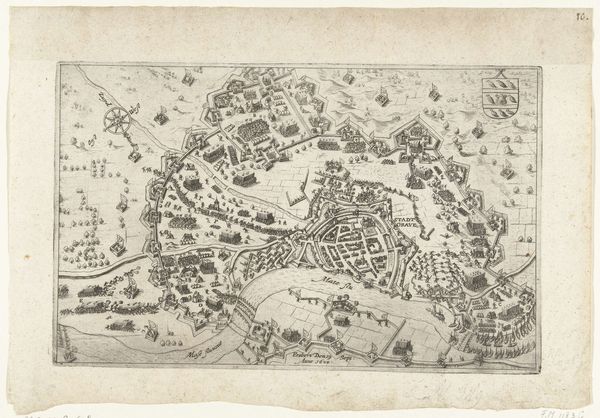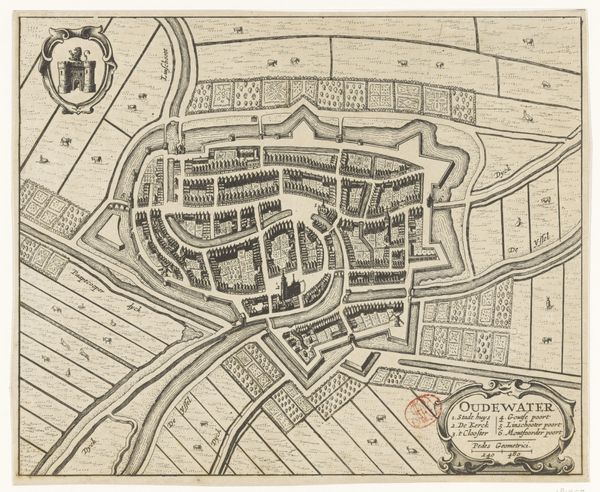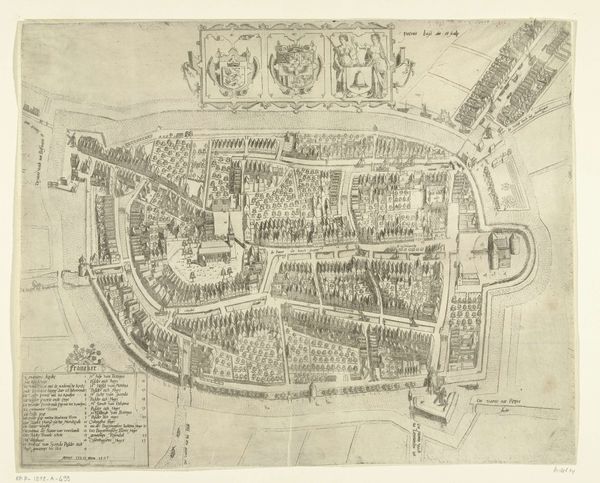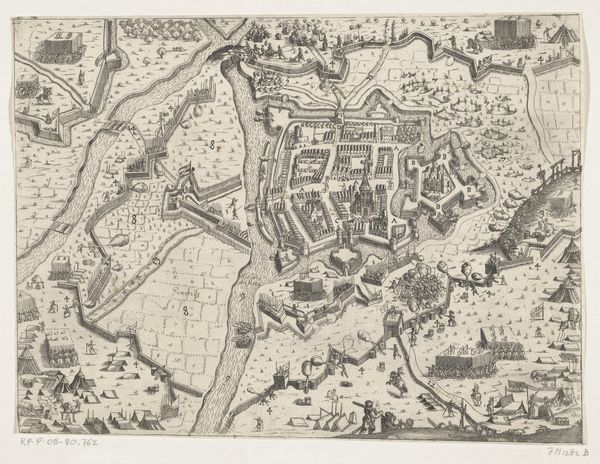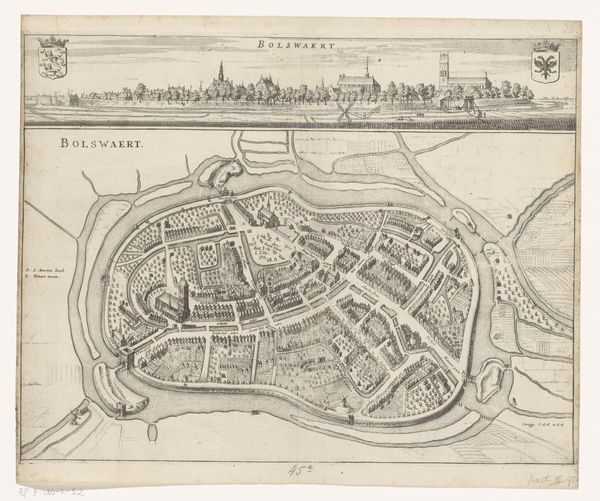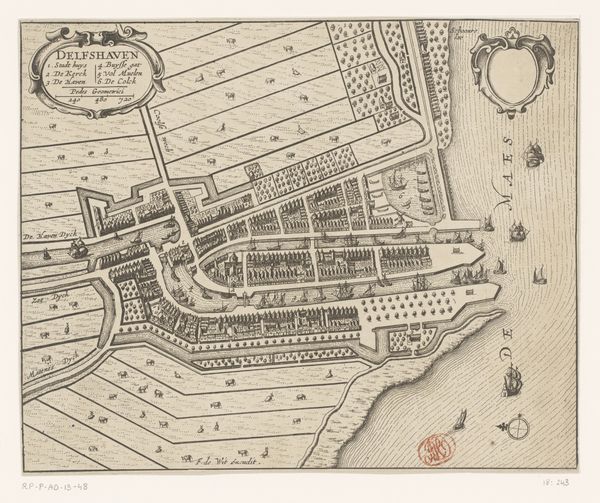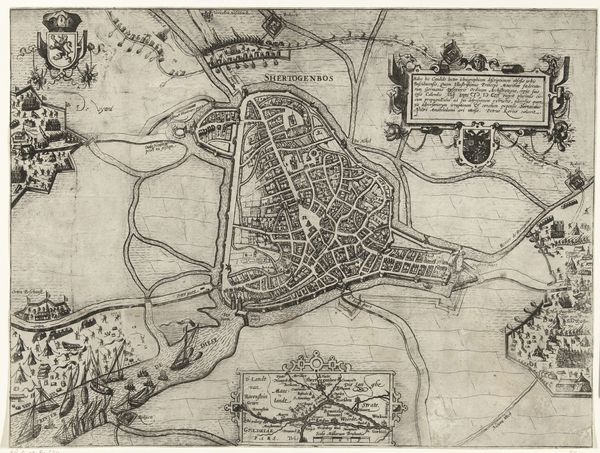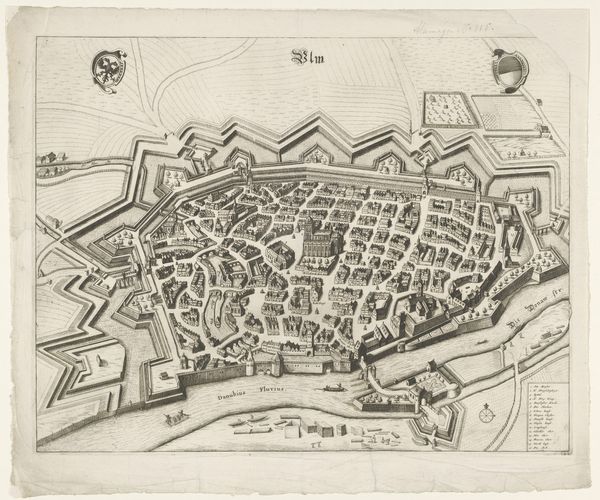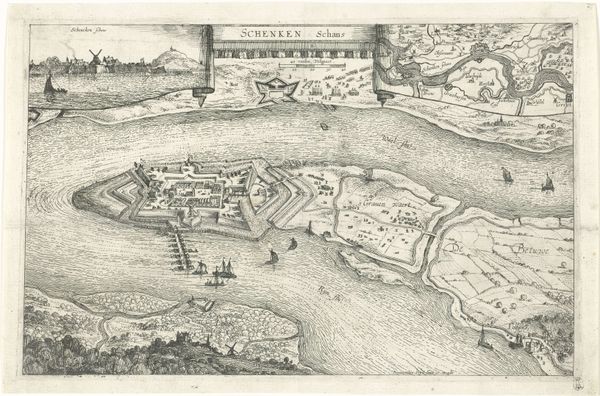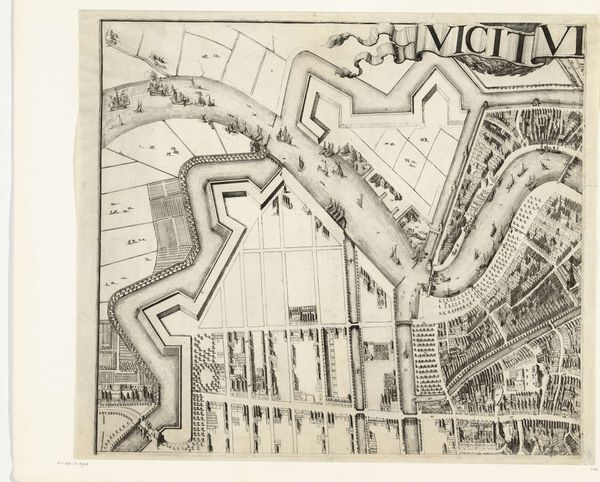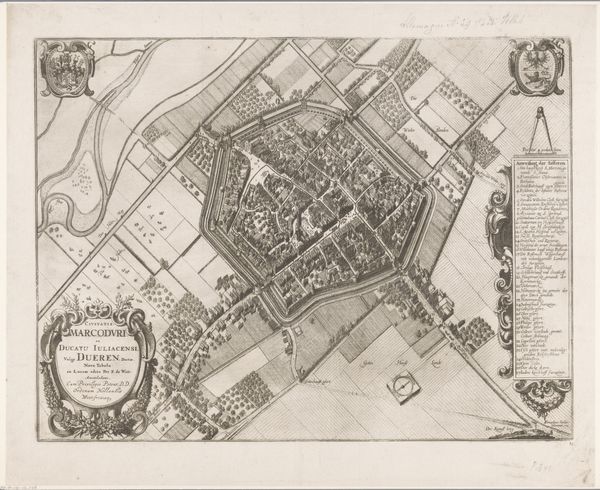
drawing, etching, ink, pen
#
drawing
#
toned paper
#
medieval
#
etching
#
old engraving style
#
hand drawn type
#
etching
#
11_renaissance
#
personal sketchbook
#
ink
#
ink drawing experimentation
#
pen-ink sketch
#
pen work
#
sketchbook drawing
#
pen
#
cityscape
#
sketchbook art
Dimensions: height 147 mm, width 178 mm
Copyright: Rijks Museum: Open Domain
Editor: Here we have a "Plattegrond van de stad Meiningen (?)," or "Map of the city of Meiningen(?)," dating from the 16th century. It’s an anonymous work held at the Rijksmuseum, and it seems to be made using pen, ink, and etching on toned paper. The city’s rigid boundary, constructed for defense, is visually arresting. What strikes you about this piece? Curator: I find this drawing fascinating because it’s not just a map; it's a statement about power and control. Consider the 16th century – a time of immense political and religious upheaval. How does the rigid fortification depicted reflect anxieties of that period? Editor: Well, looking at it, the high walls and fortified edges give an impression of safety, but also restriction. Like the people within were guarded, or even trapped. Curator: Exactly. Now, think about who commissioned this map and why. Was it for military strategy, civic pride, or something else? The very act of mapping was a way of claiming ownership and authority over a territory. This isn't simply about geographical representation; it’s about projecting dominance and regulating movement and belonging. Editor: So the map itself becomes a political object, showing not just what’s there, but who’s in charge? Curator: Precisely! Consider the implications of defining space and borders. Who benefits from these controlled boundaries, and who is excluded? These kinds of visual representations help us think critically about space, power, and the ongoing struggles around land and identity. Editor: That makes me think differently about the city, it wasn't a place for everybody to enjoy; it was controlled from above. I hadn’t considered the politics inherent in urban planning of that era. Curator: It’s a lens that enriches our perspective of urban planning and spatial justice across the ages!
Comments
No comments
Be the first to comment and join the conversation on the ultimate creative platform.
